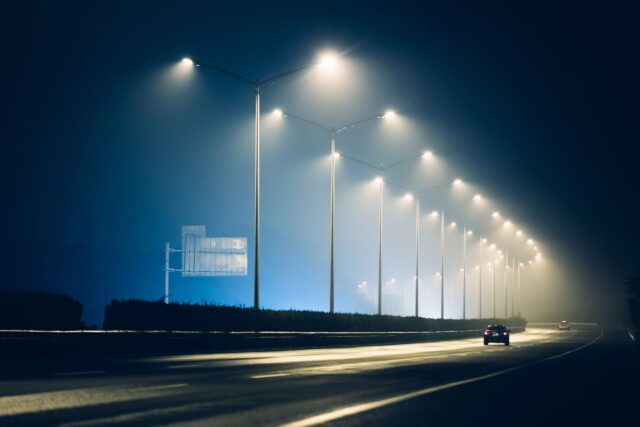
As we stride into a future illuminated by innovation, one revolution stands particularly prominent — the transition to LED (Light Emitting Diodes) street lighting. Reflecting the harmonious fusion of technological advancement and environmental consciousness, these lights are the brilliant emblems of a new era of illumination.
So, let’s turn our focus towards unraveling the multifaceted advantages of LED street lights, the transformative potential they offer for urban landscapes, and the challenges we face in harnessing their full potential.

Advantages
First and foremost, the superiority of LED technology over traditional street lighting is irrefutable, painting a vivid picture of the future of public illumination. They provide better luminosity, produce less heat, and are adjustable to different light levels, offering an array of benefits ranging from enhanced safety to energy efficiency. As we delve into the specifics, the merits of LEDs will become even more apparent, underlining their critical role in shaping the urban nightscape.
However, the shift towards LED street lights is not just about luminosity or adaptability; it’s about bringing a profound change in how we perceive and use light. Traditional lighting systems, with their poor lifespan and high maintenance costs, are giving way to LEDs, which promise lower operating costs and superior performance. By marrying the principles of practicality and innovation, they are redefining the benchmarks of urban lighting.
Energy Efficiency and Cost Savings
LEDs are renowned for their exceptional energy efficiency, consuming far less power than traditional light sources while delivering the same level of brightness. This reduced energy consumption translates into significant cost savings over time. For cash-strapped municipalities across the world, these savings can free up funds for other critical public services, making the street lighting an investment for a brighter future.
The financial benefits are not limited to energy savings alone. LEDs are designed to provide up to 50,000 hours of illumination, significantly outlasting traditional street lights.
This prolonged lifespan means fewer replacements, leading to additional savings in maintenance costs. Thus, LEDs not only reduce energy bills but also lighten the load of maintenance expenses, making them a financially prudent choice.
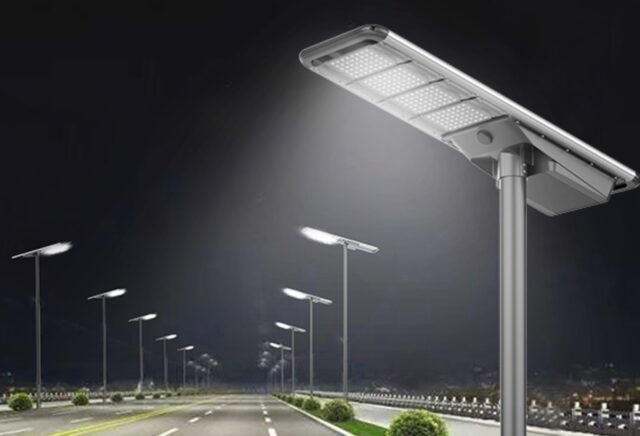
Environmental Benefits
LED street lights, apart from being financially smart, are also an environmentally friendly alternative. Their energy efficiency aids in decreasing greenhouse gas emissions, a pivotal step towards combating climate change. Besides, the longer lifespan of LEDs means less frequent replacements, reducing waste generation associated with discarded lighting fixtures.
In addition, they do not contain harmful substances such as mercury found in many traditional lights, reducing the risk of environmental contamination. Plus, they are fully recyclable, further minimizing their environmental footprint. Thus, the adoption of LED street lights exemplifies a holistic approach to environmental stewardship, underscoring their vital role in sustainable urban development.
Longevity and Durability
LEDs, with their advanced technology, offer exceptional durability and longevity, unrivaled by traditional lighting systems. Unlike conventional lights, LEDs do not suddenly burn out or fail; instead, they dim gradually over time, providing ample warning before replacement is needed. This predictable performance makes LED lights a reliable choice for municipal lighting.
Simultaneously, LEDs are more resistant to shocks, vibrations, and extreme weather conditions, enhancing their durability. Such robustness makes them suitable for various outdoor applications, reducing the likelihood of emergency replacements. Therefore, the superior lifespan and ruggedness provide a convincing argument for their widespread adoption.
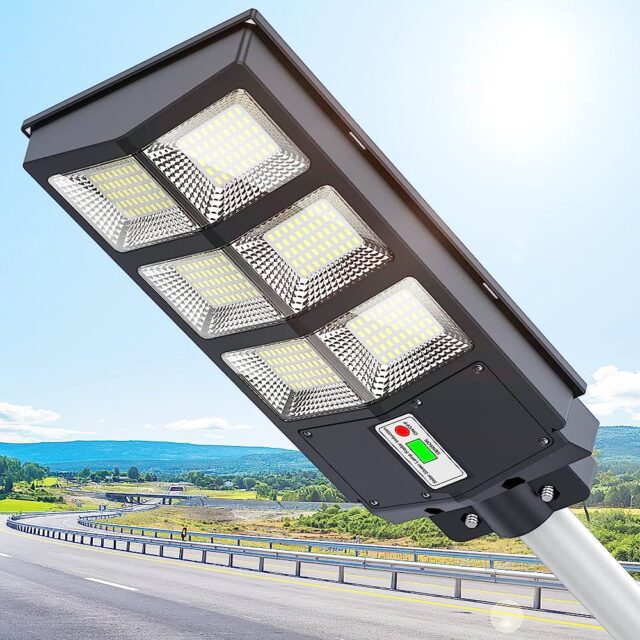
Improved Visibility and Safety
One of the most notable advantages of LED street lights is their potential to enhance visibility and safety. They produce a whiter and brighter light, closer to natural daylight, improving visibility at night. This can lead to fewer accidents, providing a safer environment for pedestrians and drivers alike.
On the other hand, LEDs’ superior color rendering abilities allow for better identification and recognition of objects at night. This has potential applications in enhancing security, as it allows for clearer CCTV footage and better facial recognition. By promoting both personal and road safety, LED street lights contribute to the creation of safer and more secure urban environments.
Reduction of Light Pollution
LED street lights offer a unique advantage in combatting a lesser-known form of pollution — light pollution. Traditional lights scatter light in all directions, including upwards, leading to a phenomenon known as “skyglow.” LEDs, on the other hand, have a directional nature, meaning they can be designed to illuminate only the intended areas, reducing unnecessary light spillage.
LEDs offer the flexibility to control the intensity of light, allowing for dimming during off-peak hours, further reducing light pollution. This has a positive impact on nocturnal wildlife and human health, while also enhancing our ability to stargaze. Thus, LED street lights promise not only better illumination but also a starlit sky, marking a balance between urban needs and nature.
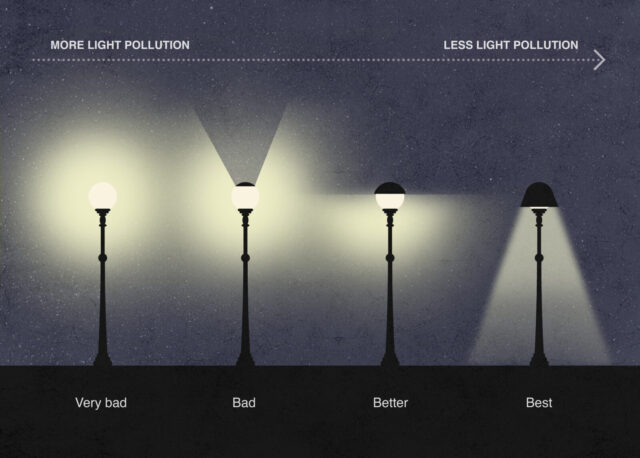
Smart Lighting and Adaptive Control Systems
LED technology’s compatibility with smart control systems opens up a plethora of opportunities for intelligent lighting solutions. These systems can adapt to changes in weather, daylight availability, and pedestrian movement, optimizing light usage. This adaptability enhances energy savings while ensuring that streets are well-lit when needed.
The integration of LEDs with Internet of Things (IoT) technology paves the way for advanced monitoring and control systems. This includes real-time fault monitoring, reducing the time to identify and replace failed lights. By embracing the potential of smart lighting, we can shape an interconnected and intelligent urban illumination system.
Implementation and Adoption Challenges
Despite the clear benefits, the transition to LED street lighting is not without challenges. High upfront costs can deter municipalities with budget constraints. Additionally, there are concerns regarding the quality of LED lights, with poorly designed fixtures causing issues like glare and over-illumination.
Further, LED technology standardization and regulation remain inadequate in many parts of the world. This can lead to the installation of subpar LED lights that fail to deliver on energy savings or longevity promises. Addressing these issues is essential for harnessing the full potential of LED technology.
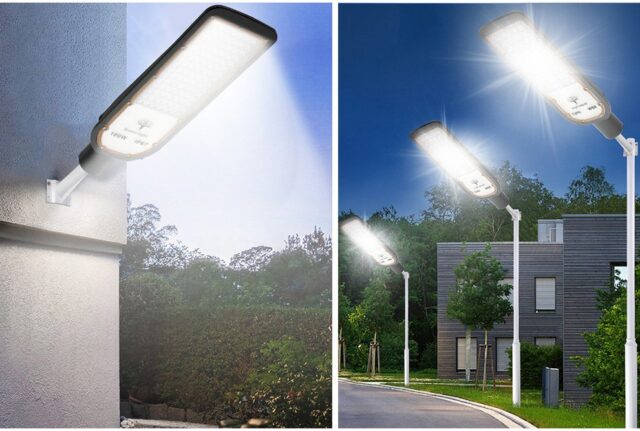
Conclusion
As we journey toward a future guided by sustainable innovation, LED street lights emerge as a beacon of promise. They present an opportunity to transform our streets into safer, more energy-efficient, and less polluting spaces. Although challenges lie ahead, the benefits of LEDs are too significant to ignore. In the end, the rise of LED street lights signals not just a new era of illumination, but a brighter and more sustainable future for us all.









